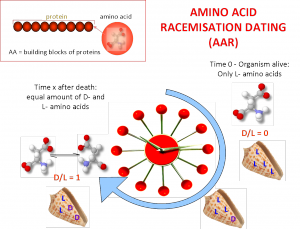In the 1910s, one of the most significant archaeological discoveries in North America was made, but it was quickly followed by one of the worst looting incidents in United States history (Bleiberg 2021). The Spiro Mounds site in Oklahoma consists of twelve, human-constructed mounds made from dirt. They date back to somewhere between 850 A.D. and 1450 A.D. and come from a Caddoan-speaking city. The mounds include nine house mounds, two temple mounds, and one burial mound (Peterson n.d.). The burial mound is called the Craig Mound, which has been referred to as the “American King Tut’s tomb,” and is where the looting took place. An early photo of it can be found in Figure 1 (Thoburn 1913).

Figure 1. Photograph of Craig Mound in 1913 by Joseph Thoburn.
https://spiromounds.com/collection/objects/craig-mound-in-the-snow-
After years of being relatively undisturbed, in 1933 the Pocola Mining Company obtained the rights to dig in the Craig Mound. They spent two years digging into it, uncovering thousands of previously well-preserved artifacts, and destroying many of them in the process. They were sold all over the world, and it took many years to recover even a small portion of what was lost. In 1936, a year after the mining company was shut down, the University of Oklahoma and the Works Progress Administration started a systematic, scientific excavation and study of the Spiro Mounds (Peterson n.d.). Excavations eventually ended in 1941 because of World War II, and the area was once again used as farmland until the 1960s. It was then that the Spiro Mounds Archaeological State Park was created, and an Interpretive Center was opened. Later, in 1991, the Oklahoma Historical Society was given site administration.
Today, the mounds site is open to the public and is preserved by the Spiro Mounds Archaeological Center. Many people visit the 150-acre protected site, where they learn about Spiro’s connection to Mississippian culture (Oklahoma Historical Society n.d.). It also contains a new exhibition, one that was developed with the help of people of Spiro ancestry (Brandes 2021). The mounds and artifacts show a history of ceremonies, mound building, religious and political systems, organized trading, and connections with other “regional mound centers,” including Cahokia (Peterson n.d.). They also tell a story of Spiro’s people trying to survive droughts and a changing climate (Bleiberg 2021). Beyond that, over 65 American public facilities and dozens of international institutions have Spiro artifacts (Brandes 2021). These artifacts include engraved conch shells (an example of which can be seen in Figure 2), copper breastplates, beads, and weapons, which display remarkable craftsmanship and sophistication.

Figure 2. Photograph of engraved conch shell excavated from Craig Mound.
https://lostworlds.org/spiro-started-upward-spiral-700-a-d/.
The Spiro Mounds are a prime example of the damage that can be caused by looters, as well as the way pieces of history can be lost and overlooked. There is a lot to be learned from both the artifacts themselves and the ways they were excavated.
Further Reading
http://www.texasbeyondhistory.net/tejas/fundamentals/spiro.html
https://www.federalregister.gov/documents/2008/05/29/E8-11990/notice-of-inventory-completion-texas-archeological-research-laboratory-the-university-of-texas-at#p-5
Reference List
Bleiberg, Larry. “Spiro Mounds: North America’s Lost Civilisation,” June 21, 2021. https://www.bbc.com/travel/article/20210621-spiro-mounds-north-americas-lost-civilisation.
Brandes, Heide. “This Little-Known Native American Society Was Once as Powerful as the Aztecs and Incas.” National Geographic, March 9, 2021. https://www.nationalgeographic.com/travel/article/spiro-and-the-art-of-the-mississippian-world-in-oklahoma.
Daniels, Gary C. “Spiro Started Upward Spiral in 700 A.D.” LostWorlds.org, August 12, 2011. https://lostworlds.org/spiro-started-upward-spiral-700-a-d/.
Oklahoma Historical Society | OHS. “Spiro Mounds Archaeological Center | Oklahoma Historical Society.” Accessed November 6, 2022. https://www.okhistory.org/sites/spiromounds.
Peterson, A. Dennis, “Spiro Mounds,” The Encyclopedia of Oklahoma History and Culture, https://www.okhistory.org/publications/enc/entry.php?entry=SP012.
Thoburn, Joseph. Craig Mound in the Snow. 1913. Photograph. Thoburn Collection, Oklahoma Historical Society. https://spiromounds.com/collection/objects/craig-mound-in-the-snow-


